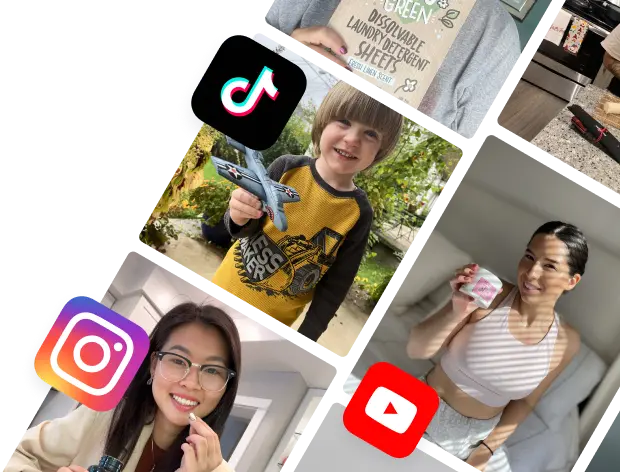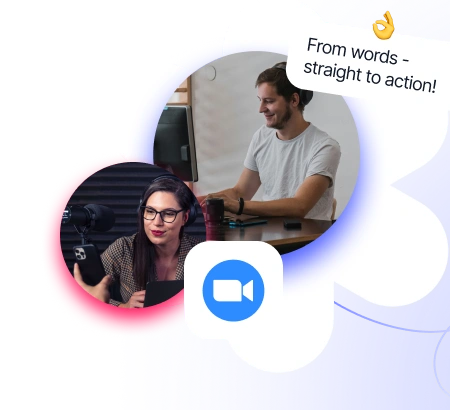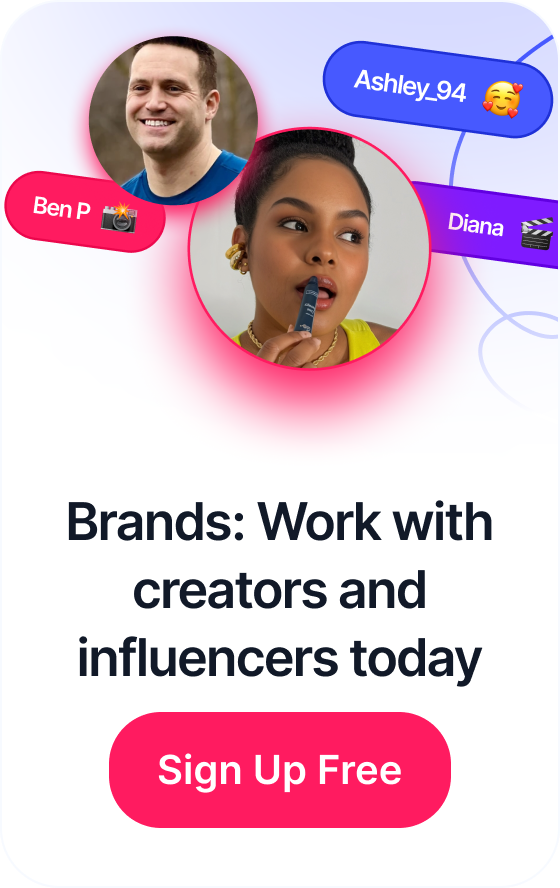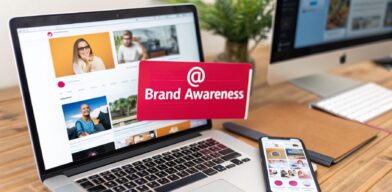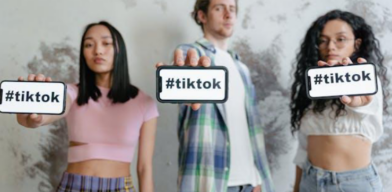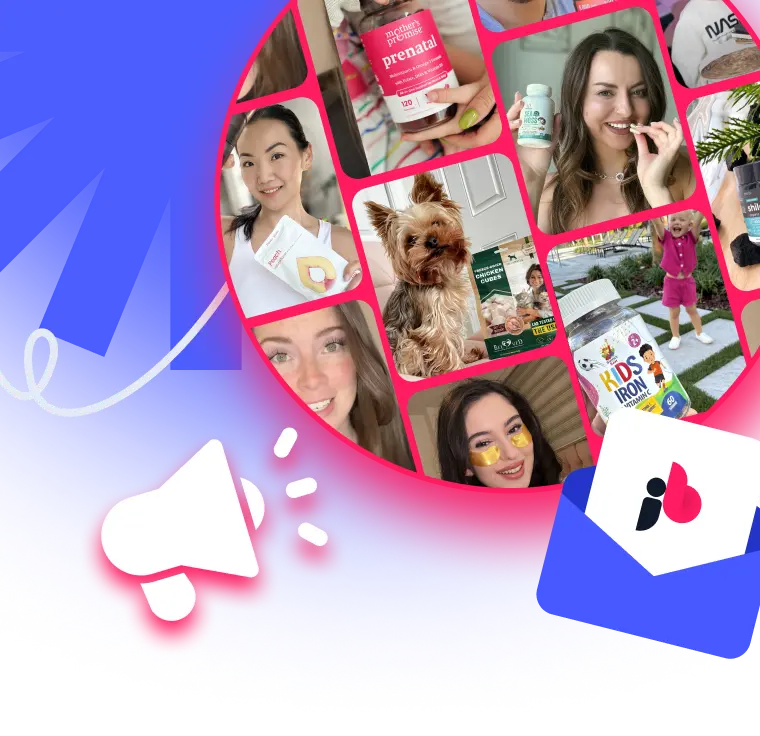 Best Brand Ambassador Programs: Top Picks to Grow Reach
Best Brand Ambassador Programs: Top Picks to Grow Reach
To build a social media marketing strategy that works, you first need to figure out what you're trying to achieve. From there, it's about identifying your audience, picking the right platforms, planning your content, and finally, tracking and tweaking your performance. Each piece should lock into place, supporting your core business objectives and turning social media from a megaphone into a real growth engine.
Table of Contents
Setting Goals That Actually Drive Business Growth

Before you even think about a single post or hashtag, your strategy needs a clear destination. Posting without a purpose is like driving without a map—sure, you're moving, but you have no idea if you're getting any closer to where you need to be. The foundation of any killer social media plan is a set of well-defined goals tied directly to your business's bottom line.
This means we have to stop chasing vanity metrics. While seeing likes and follower counts climb feels great, those numbers alone don't pay the bills. The real strategic goals are the ones that actually impact your business.
Moving Beyond Vanity Metrics
Truly effective goals connect what you do on social media to tangible business results. Instead of just aiming for "more followers," a much smarter goal is something like, "increase qualified leads from social media by 15% this quarter." This simple switch shifts your entire focus from popularity to profitability.
Think about what really matters for your business. Most goals fall into one of these buckets:
- Boost Brand Awareness: This is all about getting on your target audience's radar. You'll measure this with things like reach, impressions, and your brand's share of voice online.
- Generate Leads and Sales: This is where the rubber meets the road—turning followers into customers. Keep a close eye on click-through rates (CTR), conversion rates, and the actual revenue coming from your social channels.
- Increase Customer Retention: Social media is an incredible tool for building loyalty. Here, you might set goals around improving customer satisfaction scores or increasing the repeat purchase rate of your social followers.
- Build an Engaged Community: This goes beyond just having followers; it's about creating a tribe of loyal fans who interact with your brand. Metrics like engagement rate (likes, comments, shares) and the amount of user-generated content are key.
A social media plan without goals is just noise. Your objectives are the filter that helps you decide what content to create, which platforms to use, and how to measure success. Every action should answer the question, "Does this move us closer to our goal?"
Using the SMART Framework for Clarity
To make your goals truly actionable, the SMART framework is your best friend. It forces you to get specific and ensures every objective is clear, trackable, and realistic.
- Specific: Vague goals like "improve social media" are useless. A specific goal is "Increase Instagram Reel engagement by 20%."
- Measurable: You have to be able to track your progress. "20%" is a number you can measure; "get more engagement" is not.
- Achievable: Is the goal actually possible with your current resources? Aiming for a million followers in a month probably isn't achievable for a brand new business.
- Relevant: Does this goal support a larger business objective? Bumping up Reel engagement should tie into something bigger, like driving more website traffic from Instagram.
- Time-bound: Every goal needs a deadline. "Increase engagement by 20% in the next 60 days" creates urgency and gives you a clear timeline for evaluation.
Let's make this real. A B2B tech company on LinkedIn might set a goal to "Generate 50 qualified leads for our new software demo through sponsored content and employee advocacy posts by the end of Q3." That's so much more powerful than just "get more connections."
Or, a direct-to-consumer fashion brand could aim to "Drive $10,000 in sales from Instagram Shop and achieve a 3% conversion rate from Stories within the next month."
Understanding how to structure these objectives is fundamental, just like knowing how to create a marketing campaign from the ground up. The principles are the same: set clear, measurable targets to make sure every single thing you do has a purpose. Your social media goals are a critical piece of that bigger puzzle.
Finding Your Audience and Where They Live Online
Alright, you've got your goals locked in. The next big move? Figuring out exactly who you’re talking to. A brilliant message is just noise if it never reaches the right ears. A social media strategy that actually works means looking past basic data to see your audience as real people.
This isn't just about age and location anymore. Sure, those are okay starting points, but the real insights come from digging into the psychographics—the values, interests, pain points, and online habits that make your ideal customers tick. You need to get what they genuinely care about.
Building Detailed Audience Personas
To make all that data feel real, you need to build out detailed audience personas. Think of a persona as a character sketch of your ideal customer. Give them a name, a job, maybe a little backstory. What are their biggest headaches at work? What do they scroll through for fun?
For example, instead of just targeting "women, 25-35," let's create "Eco-Conscious Erin."
- Who is she? Erin is a 29-year-old graphic designer living in the city.
- What does she value? Sustainability and ethical sourcing are huge for her. She loves supporting small, independent businesses.
- What are her challenges? Finding high-quality, stylish products that align with her values and don't break the bank is a constant struggle.
- Where does she hang out online? She’s all over Instagram following eco-influencers, pinning inspiration on Pinterest, and active in Facebook groups dedicated to sustainable living.
See the difference? That level of detail changes everything. You're no longer just making content; you're making content specifically for Erin. This clarity helps you craft messages that connect on a much deeper level.
Understanding your audience isn’t a one-and-done task. It’s a continuous process of listening and learning. Pay attention to the questions they ask, the slang they use, and the content they share. This is your roadmap for creating a strategy that feels personal and relevant.
Pinpointing the Right Social Media Platforms
Knowing who you're targeting is half the battle. Now you have to find out where they spend their time online. Spreading your brand too thin across every platform out there is one of the most common mistakes I see. A focused strategy on two or three key platforms where your audience is truly active will always beat a scattered presence everywhere.
Let's face it, user attention is split. By 2025, a staggering 5.42 billion people—that's over 64% of everyone on the planet—are expected to be on social media. People bounce between nearly seven different social networks a month, so your approach has to be tailored to each one.
Choosing the right channels is all about matching your audience persona to the platform's user base and vibe.
- Instagram and TikTok: These are visual-first powerhouses. If you're a brand with strong aesthetics—think fashion, food, or travel—this is your playground. They run on short-form video, authentic stories, and influencer marketing. If "Eco-Conscious Erin" is your target, you absolutely have to be here.
- LinkedIn: This is the undisputed champion for B2B. It’s all about professional networking, industry insights, and establishing your expertise. If your target persona is "Startup Steve," a tech founder hunting for software solutions, LinkedIn is where you'll find him.
- Facebook: With its massive user base and powerful community tools like Groups, Facebook is incredibly versatile. It's a great fit for local businesses, community-focused brands, and anyone targeting a wider demographic.
- Pinterest: Think of Pinterest less as social media and more as a visual search engine for inspiration. It's a goldmine for brands in DIY, home decor, weddings, and food, because users are actively planning their next purchase.
A great way to get started is to dive into the analytics on your existing social accounts. See who's already following and engaging with you. The data might just confirm what you thought, or it could reveal a surprising new audience you hadn't considered.
Even better, a powerful shortcut is collaborating with influencers who have already earned the trust of your target audience. Finding the right creators gives you instant credibility within a niche community. If you're not sure where to start, our guide on how to find content creators breaks down the steps to identify partners who are a perfect match for your brand. When you're strategic about where you show up, your message doesn't just reach your audience—it lands with maximum impact.
Building Your Content Engine and Editorial Calendar
With your goals locked in and a solid grasp of your audience, it’s time to build the engine that powers your social media: your content. A winning strategy isn't about posting on a whim. It’s about consistently delivering value that connects with your ideal customer, and that starts with your core content pillars.
Think of content pillars as the 3 to 5 main themes your brand will own. These topics should live at the sweet spot where your brand’s expertise meets your audience’s interests. They become your North Star, making sure every single thing you create is on-brand and relevant.
Let's say you're a sustainable activewear brand. Your pillars might look something like this:
- Eco-Friendly Materials: Behind-the-scenes looks at how you source your fabrics.
- Mindful Movement: Sharing yoga flows, meditation tips, and general wellness advice.
- Behind the Brand: Telling the stories of your ethical production process and the people on your team.
- Community Spotlights: Featuring customers and ambassadors living your brand's values.
With pillars like these, you'll never stare at a blank calendar wondering what to post again. They are the bedrock of your editorial plan.
Diversifying Your Content Formats
Once your pillars are set, you need to decide on the right formats to bring those ideas to life. Sticking to just one type of content is a fast track to a stale feed. A dynamic mix keeps things fresh, speaks to different segments of your audience, and plays to the strengths of each platform.
Short-form video—think Instagram Reels and TikToks—is non-negotiable for grabbing attention. It’s perfect for quick tips, behind-the-scenes moments, and jumping on trends that make sense for your brand. Meanwhile, high-impact carousel posts on Instagram or LinkedIn are brilliant for breaking down bigger ideas into easy-to-digest, shareable slides.
And don't sleep on the power of authentic user-generated content (UGC). When you encourage customers to share photos and videos with your products, you build massive social proof and get a steady stream of genuine, trustworthy content. Platforms like JoinBrands make it incredibly simple to find and team up with creators who can produce high-quality UGC that fits your brand aesthetic perfectly.
Constructing a Practical Editorial Calendar
Your editorial calendar is where your strategy gets real. This is the operational heart of your content plan, turning big ideas into a concrete schedule. A well-organized calendar lets you map out posts weeks or even months ahead, guaranteeing a balanced and consistent presence. This foresight is what separates the pros from the people scrambling at the last minute.
But it’s more than just plugging in ideas. It’s about creating a strategic rhythm for your content. You need to balance different post types to keep your audience hooked without burning them out on constant sales pitches.
A great content calendar doesn't just schedule posts; it orchestrates a conversation. It balances education, entertainment, community building, and promotion to create a holistic brand experience for your followers.
A simple but effective framework to follow is a content ratio, like the 4-1-1 rule. The idea is that for every six posts, four should be valuable, educational, or entertaining content from your pillars. One can be a soft promotion, like a customer testimonial, and only one should be a direct, sales-focused post.
Of course, finding the right creators to produce content that fits these pillars can be a huge time-sink. The process below shows how this can be simplified.
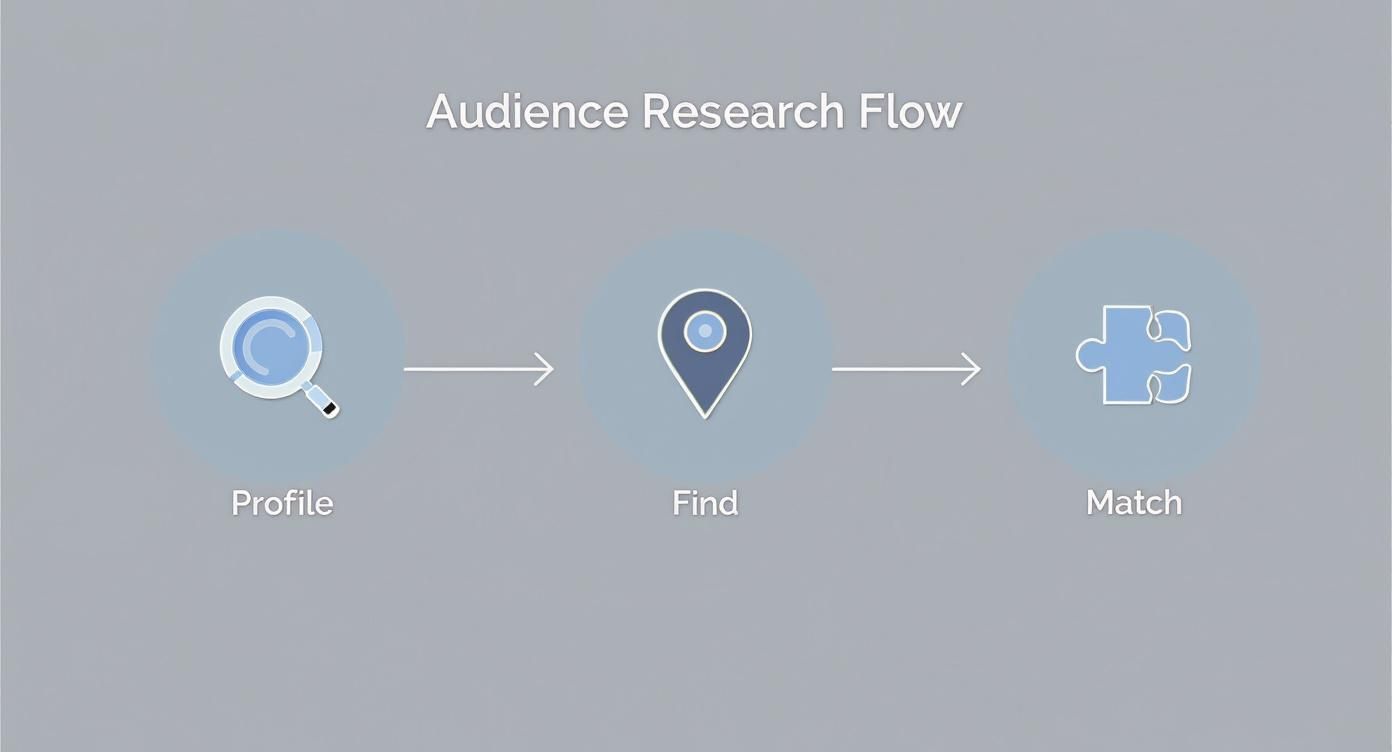
This workflow helps you quickly identify the right partners, ensuring the creators you collaborate with are a natural fit for your audience and brand.
To give you a clearer picture of how this comes together, here's a basic framework for a weekly content plan.
Sample Content Calendar Framework
| Day of Week | Content Pillar | Format (Instagram) | Format (LinkedIn) | Call to Action (CTA) |
|---|---|---|---|---|
| Monday | Eco-Friendly Materials | Reel: "From Plant to Pant" | Article: "The Future of Sustainable Fabrics" | Share your favorite eco-tip! |
| Tuesday | Mindful Movement | Carousel: "5 Stretches for Your WFH Day" | Text Post: Poll about wellness challenges | Save this post for later. |
| Wednesday | Behind the Brand | Story Q&A with the Founder | Post: Employee Spotlight | Ask us anything! |
| Thursday | Community Spotlights | UGC Repost (Photo) | Case Study: "How [Ambassador] Trains" | Tag us in your journey! #BrandFam |
| Friday | Soft Promotion | Customer Testimonial Graphic | Text Post: Sharing a positive review | See what others are saying. |
| Saturday | Mindful Movement | Static Image: Inspirational Quote | N/A (lower engagement day) | What's your weekend workout? |
| Sunday | Direct Promotion | Product Showcase Video | N/A (lower engagement day) | Shop the new collection—link in bio! |
This is just a starting point, but it shows how you can mix pillars, formats, and promotional levels to create a balanced feed.
You can start with a simple spreadsheet or a more advanced tool. For a deep dive and a plug-and-play template, check out our complete guide on building a social media content calendar template you can customize for your brand.
Don't underestimate the importance of this planning. Data shows that 58% of consumers discover new businesses through social media, which is more than traditional search engines. With people spending an average of 141 minutes on these apps every day, a planned calendar ensures you show up consistently and are ready to capture their attention. Building out your calendar is the final step in creating a content engine that truly works for you.
Fostering Community and Managing Your Brand Voice
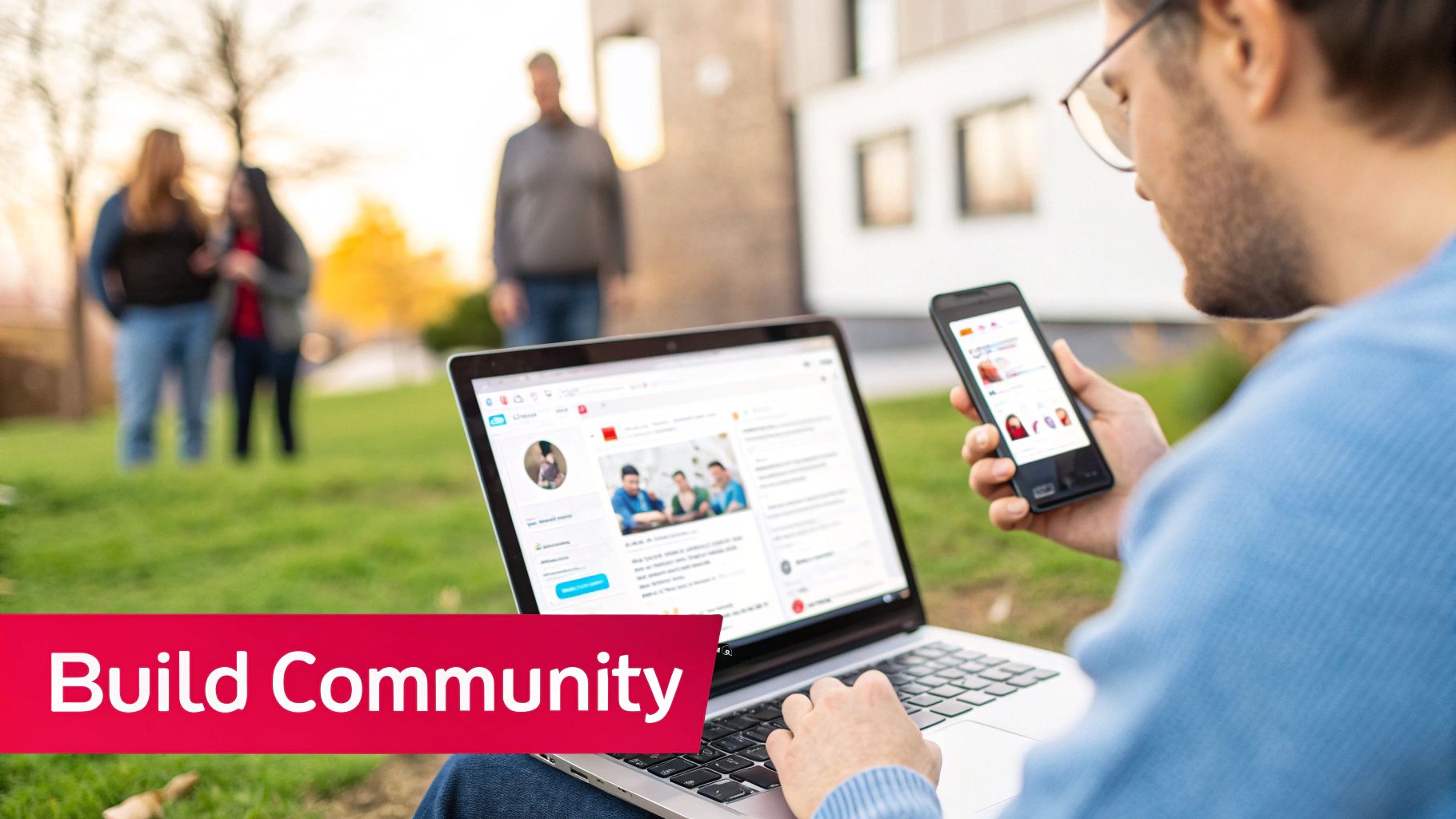
Killer content might get you on the map, but a real, thriving community is what keeps people coming back for more. Think about it: social media is a conversation, not a stage for a monologue. The brands that really get it treat every single interaction—every comment, DM, and review—as a chance to build a genuine relationship.
This is where the real work begins, long after you hit "publish." It’s about cultivating the space you’ve created online. The ultimate goal is to turn those passive followers into a loyal crew of brand advocates who feel like they're part of something.
The Art of the Conversation
Engagement is always a two-way street. When someone takes the time to leave a comment, they're starting a conversation. A quick, thoughtful response doesn't just make that one person feel valued; it sends a clear signal to everyone else that you're a brand that actually listens.
This goes for both the good and the bad feedback. A glowing comment is a perfect opportunity to show your gratitude and amplify that positive vibe. A negative one? That’s your chance to show off some stellar customer service and potentially turn a bad experience into a win.
Responding quickly is a bigger deal than you might think. We've seen data showing that brands with high community engagement are 4.5 times more likely to build customer loyalty. Your response time says a lot about how much you value what your audience has to say.
How to Proactively Build Your Community
Beyond just reacting, a solid social media strategy means sparking conversations yourself. This keeps your community buzzing and gives people more reasons to check in and interact with you.
- Run Polls and Quizzes: Ask for opinions on new product ideas, color options, or even just some fun, off-topic stuff. It’s an easy way for people to engage and gives you a ton of valuable feedback.
- Host Q&As or AMAs: Put your founder, a designer, or a product expert in the hot seat. An "Ask Me Anything" session builds incredible transparency and a human connection to your brand.
- Jump into Relevant Conversations: Use social listening to find discussions happening in your niche. Pop in with some helpful advice or a unique perspective—without a hard sales pitch—to position your brand as a helpful authority.
These tactics shift you from being just a content creator to a community facilitator, which is a much more powerful role to play.
Defining and Sticking to Your Brand Voice
As you’re engaging with everyone, your brand voice is the glue that holds it all together. It's the unique personality that shines through in everything you say and do. Are you witty and a bit playful? Or are you more inspirational and buttoned-up?
Whatever you land on, consistency is non-negotiable. Your voice needs to sound the same whether you’re writing an Instagram caption, replying to a DM, or handling a tough customer complaint. A clearly defined voice makes your brand feel authentic and reliable. To nail this, you have to understand the core principles of effective community management, which is a skill set all on its own.
This isn’t just about what you say, but how you say it. Defining your voice means picking specific words to use (and which to avoid), deciding on your emoji and GIF game, and setting the overall tone. When you document these guidelines, anyone who touches your social accounts can represent the brand consistently, turning every little interaction into a chance to build up your reputation.
Measuring What Matters and Optimizing with AI
Making great content and building a real community are massive wins. But let's be honest—a social media strategy without data is just throwing spaghetti at the wall and hoping something sticks.
To know if your hard work is actually paying off, you have to measure what matters. That means looking past the flashy, surface-level numbers and digging into the data that connects directly to your business goals.
This final step is all about analysis and optimization. It's where you turn raw data into smart decisions, making sure your strategy not only works today but gets even sharper tomorrow.
Identifying Your Key Performance Indicators
First things first, you need to pinpoint the right Key Performance Indicators (KPIs). Think of these as the specific, measurable signposts that tell you if you're on track to hit those SMART goals you set earlier.
It's easy to get caught up chasing likes and followers. But a post can get a thousand likes and still result in zero website clicks or sales. This is exactly why you have to tie your metrics back to your objectives.
For Brand Awareness Goals: Keep a close eye on reach (how many unique people see your content) and impressions (the total number of times your content is shown). If your reach is growing, you know you're successfully finding new eyeballs.
For Engagement Goals: Your engagement rate (likes, comments, and shares divided by followers) is your go-to metric here. I also like to track the amplification rate—basically, the number of shares per post. It shows you who’s so fired up about your content that they pass it on to their own network.
For Lead and Sales Goals: Now we're talking about the numbers that really move the needle. You'll want to obsess over click-through rate (CTR), conversion rate from your social channels, and cost per lead (CPL). These KPIs tell you exactly how effective your social presence is at driving real business results.
Don't get lost in a sea of data. Pick three to five core KPIs that directly answer the question: "Is our social media strategy helping us achieve our main business objectives?" This focus is what separates a busy strategy from a productive one.
Navigating Analytics Tools
The good news is you don't need a data science degree to get these insights. Every major social platform has its own built-in analytics dashboard that's packed with useful info. Instagram Insights, Facebook Analytics, and LinkedIn Analytics are fantastic, free tools that can show you everything from post performance to audience demographics and the best times to post.
For a more streamlined view, a platform like JoinBrands pulls all that data from multiple channels into one clean dashboard. This helps you see the bigger picture, compare how you're doing on different platforms, and create reports that clearly show the ROI of your efforts. I recommend checking these reports weekly or bi-weekly so you can make adjustments on the fly.
The Growing Role of AI in Your Strategy
Once you have your data, the next move is optimization—and this is where artificial intelligence is completely changing the game. AI isn't some far-off concept anymore; it's a practical tool that helps marketers like us make smarter, faster decisions. As you explore how to fine-tune your strategy, it’s worth understanding what AI-generated content really is and how it fits in.
Weaving AI tools into your workflow has become a non-negotiable part of modern social media marketing. In fact, one Hootsuite report found that more than 75% of senior social media strategists are now using AI to get better results. Teams that embrace these tools are more agile, updating their strategies more often and capitalizing on new opportunities way faster than the competition. You can get more details from these social media trends from Hootsuite.
AI-powered tools can crunch massive amounts of data to find patterns and predict trends in a way no human ever could. This gives you a serious edge in a few key areas:
- Predictive Trend Spotting: AI can analyze millions of online conversations to flag emerging trends before they blow up. This is a huge advantage, letting you jump on relevant topics early and capture audience interest.
- Optimizing Ad Spend: Instead of manually tweaking your campaigns, AI can automatically adjust them in real time. It analyzes performance to shift your budget toward the best-performing ads and audiences, squeezing every last drop of value from your ad spend.
- Advanced Analytics: AI goes way beyond basic metrics. It can analyze the sentiment in comments and mentions to tell you how people feel about your brand, not just how many times they liked a post.
Platforms like JoinBrands have AI baked into their core, from matching you with the perfect content creators to providing predictive analytics on how your campaigns will perform. This lets you stop guessing and start making data-backed decisions that truly amplify your results. Your social media strategy becomes a living, intelligent system that's always learning and improving.
Of Course, Here Is the Section Rewritten With a Natural, Human Tone
Answering Your Toughest Social Media Strategy Questions
Even with a killer strategy mapped out, you're going to hit some bumps in the road. It happens to everyone. Once you get into the day-to-day grind, questions inevitably pop up. Here are a few of the most common ones I hear, along with some straight-up advice to keep you on track.
How Often Should I Update My Social Media Marketing Strategy?
Treat your strategy like a living, breathing part of your business—not some dusty document you create once and forget about.
Yes, you should do a major, top-to-bottom review annually. But the real magic happens in the smaller check-ins. I always recommend sitting down with your team quarterly to look at the data.
These quarterly meetings are where you get real. You’ll see what content is actually connecting with people and what’s falling flat. It’s also your chance to react to those lovely algorithm changes or new platform features that get thrown our way. And if your business makes a big move—say, you launch a new flagship product or expand into a new country—that’s your cue to revisit the strategy immediately, no matter what the calendar says.
Your strategy needs to be flexible enough to pivot when needed, but steady enough to build real momentum. Regular check-ins aren’t about flipping your whole plan upside down; they’re about making smart tweaks to stay aligned with your big-picture goals.
What Is the Difference Between a Strategy and a Plan?
People throw these two words around like they’re the same thing, but they’re not. Nailing down the difference is crucial for keeping your team organized and focused.
Think of your strategy as the "why." It’s your North Star. It answers the big questions:
- Who are we really talking to? (Your audience personas)
- What are we trying to accomplish here? (Your business goals)
- What’s our vibe? (Your brand voice and overall approach)
Your plan is the "how." This is where the rubber meets the road—the tactical stuff that makes your strategy a reality. We’re talking about the nitty-gritty details:
- The content calendar and posting schedule.
- Specific briefs for upcoming campaigns.
- The day-to-day tasks your team handles to run your channels.
Bottom line: the strategy gives the plan its purpose. Without a solid strategy, your plan is just a bunch of random posts hoping for the best.
How Do I Set a Realistic Social Media Budget?
There’s no magic number here. A realistic social media budget is tied directly to what you want to achieve. A huge mistake I see brands make is thinking their budget is just their ad spend. It’s so much more than that.
First, let’s break down all the places your money might go:
- Content Creation: This isn't just about paying creators. It’s your software subscriptions (like Canva or Adobe), new camera gear, or fees for photographers. This is exactly where a platform like JoinBrands can be a game-changer, giving you access to high-quality UGC without the massive price tag.
- Paid Advertising: This is the obvious one—the money you put behind boosting posts and running targeted campaigns to find new customers.
- Management Tools: Think about your scheduling platforms, analytics software, and social listening tools. They all add up but save you a ton of time.
- People: Don't forget the cost of your team, whether that’s in-house staff or freelance help. Their time is valuable.
Tie your budget directly to your goals. If your main goal is massive brand awareness, you'll probably need to allocate a bigger chunk to ad spend. But if you’re all about building a tight-knit community, your budget might lean more heavily on content creation and engagement tools to get those conversations started.
Ready to stop planning and start creating content that actually gets results? JoinBrands is where you’ll find over 250,000 creators ready to produce authentic UGC, manage your influencer campaigns, and help you grow your social presence—all from one dashboard. Find your perfect creator today on JoinBrands.

